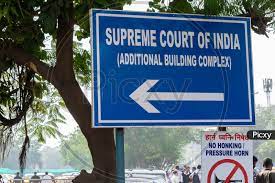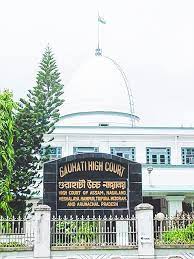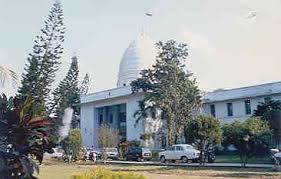(A) Environment (Protection) Act, 1986, subsection (1) and clause (v) of sub-section (2) of Section 3 – Environment (Protection) Rules, 1986, clause (d) of sub-rule (3) of Rule 5 of the 6 –Environmental Clearance notification was issued on 14th September 2006, Clause 2 – Environment Law – Requirements of prior Environmental Clearance (EC) –Challenge to notification dated 28th March 2020’), which modified earlier EC notifications, items 6 and 7 Appendix IX – Contention raised regarding the illegal invocation of power under sub-rule (4) of Rule 5 has not been dealt with – Not going into the question of whether it was necessary for the Central Government to specify reasons in the impugned notification itself why it came to the conclusion that in the public interest, the requirement of public notice should be dispensed with – However, the reasons for the said conclusion ought to have been set out in the counter affidavit filed before the NGT or, at least, in the counter affidavit filed before this Court – The document recording the satisfaction of the competent authority about the existence of public interest and the nature of the public interest ought to have been produced by the Ministry – But, no such document was produced – Only one conclusion can be drawn – The drastic decision to invoke sub-rule (4) of Rule 5 was made without any application of the mind – Hence, the decision-making process has been vitiated – Impugned notification was issued two days after the nationwide lockdown was imposed due to the COVID-19 pandemic – At that time, the work of linear projects, such as roads, pipelines, etc., had come to a grinding halt – So, there was no tearing hurry to modify the EC notifications – Inclusion of item 6 of the substituted Appendix-IX held to be illegal.(Para 23 and 24)
(B) Constitution of India, Article 14 – Environment (Protection) Act, 1986, subsection (1) and clause (v) of sub-section (2) of Section 3 – Environment (Protection) Rules, 1986, clause (d) of sub-rule (3) of Rule 5 of the 6 – Environmental Clearance notification was issued on 14th September 2006, Clause 2 – Environment Law – Requirements of prior Environmental Clearance (EC) – Challenge to notification dated 28th March 2020’), which modified earlier EC notifications, items 6 and 7 Appendix IX – Arbitrariness – But for item 6 in Appendix-IX to the impugned notification, for extraction, sourcing, or borrowing of ordinary earth for linear projects, prior EC would have been required in terms of the first EC notification – The very object of issuing the first EC notification incorporating the mandatory requirement of obtaining EC for projects was that the damage to the environment must be minimised while implementing projects – When an exception is sought to be carved out by incorporating Appendix-IX to the requirement of obtaining EC in the first EC notification, the exception must be specific – Item 6 grants exemption for “extraction or sourcing or borrowing of ordinary earth for linear projects, such as roads, pipelines, etc.” -There is no specification about the quantum of ordinary earth, which can be extracted on the basis of the exemption – There is no specification of the area which can be used to extract ordinary earth – It is also not provided that only that quantity of ordinary earth, which is required to implement the linear projects, is exempted – Importantly, “linear projects” have not been defined – Without the definition, it is difficult to imagine which projects will be termed linear projects – The term “linear projects” is very vague – The process to be adopted for excavation has not been set out – Held that item 6 is a case of completely unguided and blanket exemption, which is, per se, arbitrary and violative of Article 14 of the Constitution of India – There is no provision for setting up an authority which will decide whether a particular linear project is covered by item 6 – During the pendency of the appeals, an amendment was made to item 6 by the notification dated 30th August 2023 – Even the amended impugned notification does not elaborate on the concept of linear projects – No restriction is imposed on the quantum of ordinary earth, which can be extracted for linear projects – Therefore, even the amended item 6 continues to suffer from the same vice of arbitrariness, which Article 14 of the Constitution of India prohibits.(Para 25 and 26)
SUPREME COURT OF INDIA
2024 STPL(Web) 193 SC
[2024 INSC 241]
Noble M. Paikada Vs. Union Of India
Civil Appeal Nos. 1628-1629 of 2021-Decided on 21-03-2024
https://stpllaw.in/wp-content/uploads/2024/04/2024-STPLWeb-193-SC.pdf







